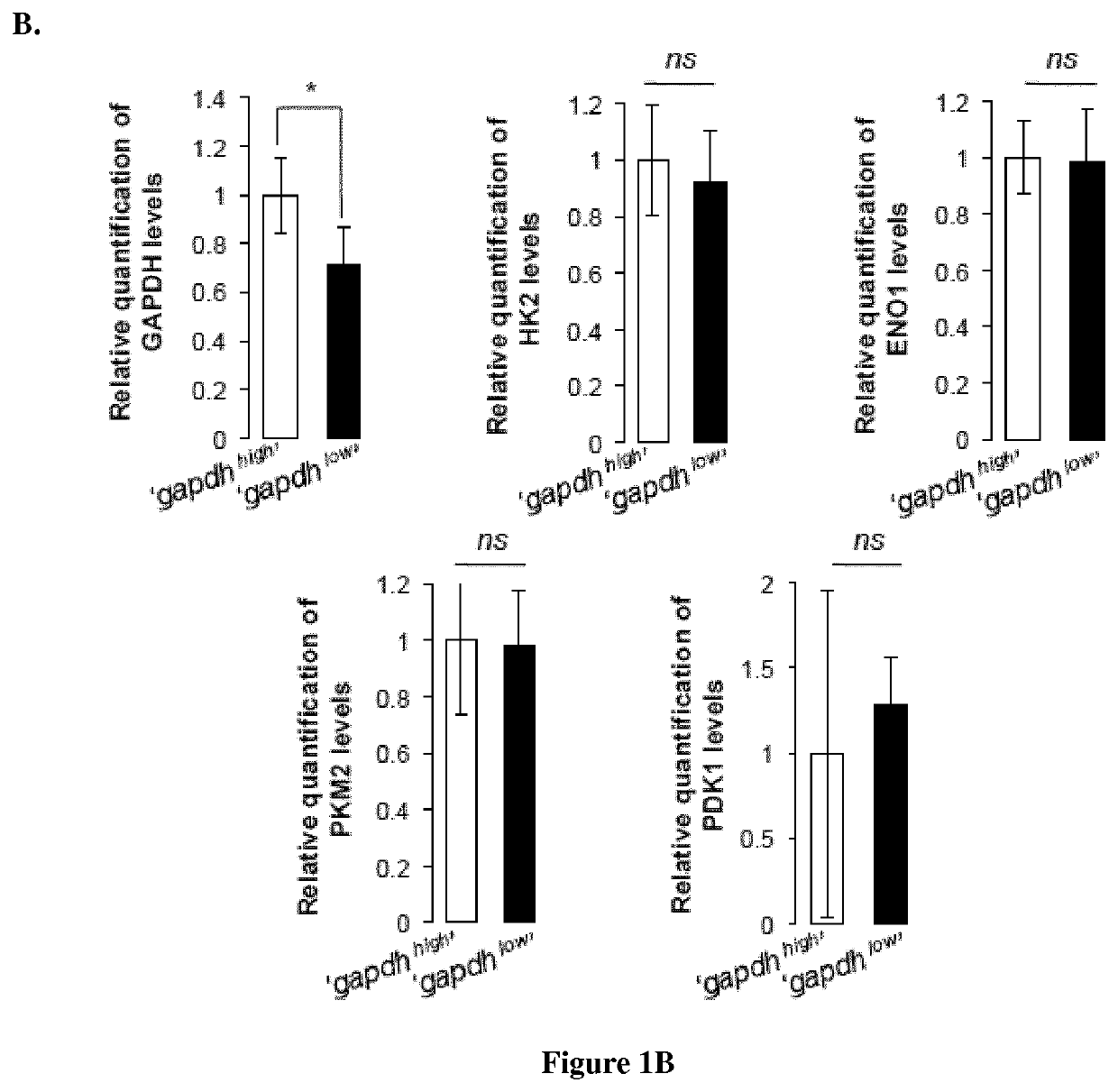Methods for determining the metabolic status of lymphomas
a lymphoma and metabolic status technology, applied in the field of lymphoma metabolic status determination, can solve the problems of not being compatible with clinical use, not being compatible with clinical investigation, and not being able to determine the metabolic status of a tumor, including lymphoma
- Summary
- Abstract
- Description
- Claims
- Application Information
AI Technical Summary
Benefits of technology
Problems solved by technology
Method used
Image
Examples
example
[0100]Material & Methods
[0101]Cell Culture:
[0102]Mouse primary Eμ-Myc clones (B lymphoma cells) obtained from lymphomas of different C57BL / 6 Eμ-Myc transgenic mice were isolated as described previously (Lindemann et al., 2007) and maintained in DMEM supplemented with 10% FCS, 2-mercaptoethanol (50 μM), L-asparagin (0.37 mM) and HEPES (pH 7.4, 10 mM). C57BL / 6 Eμ-Myc transgenic mice were purchased from the Jackson Laborator.
[0103]Reagents and Antibodies:
[0104]Rabbit anti-GAPDH was from (Abcam, Cambridge, UK), mouse anti-Erk2 was from Santa Cruz Biotechnology (Santa Cruz, Calif., USA). Other antibodies were from Cell Signaling Technology (Beverly, Mass., USA). Mitochondrial complex I inhibitor, phenformin was from Sigma.
[0105]Plasmids:
[0106]Complementary sense and antisense oligonucleotides were annealed and into BglII / HindIII-cut pSUPER retro.Neo+GFP vector (oligoengine) to produce short hairpin RNA (shRNA) targeting mouse gapdh (shgapdh). shRNA targeting luciferase was used as a cont...
PUM
| Property | Measurement | Unit |
|---|---|---|
| pH | aaaaa | aaaaa |
| pH | aaaaa | aaaaa |
| final volume | aaaaa | aaaaa |
Abstract
Description
Claims
Application Information
 Login to View More
Login to View More - R&D
- Intellectual Property
- Life Sciences
- Materials
- Tech Scout
- Unparalleled Data Quality
- Higher Quality Content
- 60% Fewer Hallucinations
Browse by: Latest US Patents, China's latest patents, Technical Efficacy Thesaurus, Application Domain, Technology Topic, Popular Technical Reports.
© 2025 PatSnap. All rights reserved.Legal|Privacy policy|Modern Slavery Act Transparency Statement|Sitemap|About US| Contact US: help@patsnap.com



